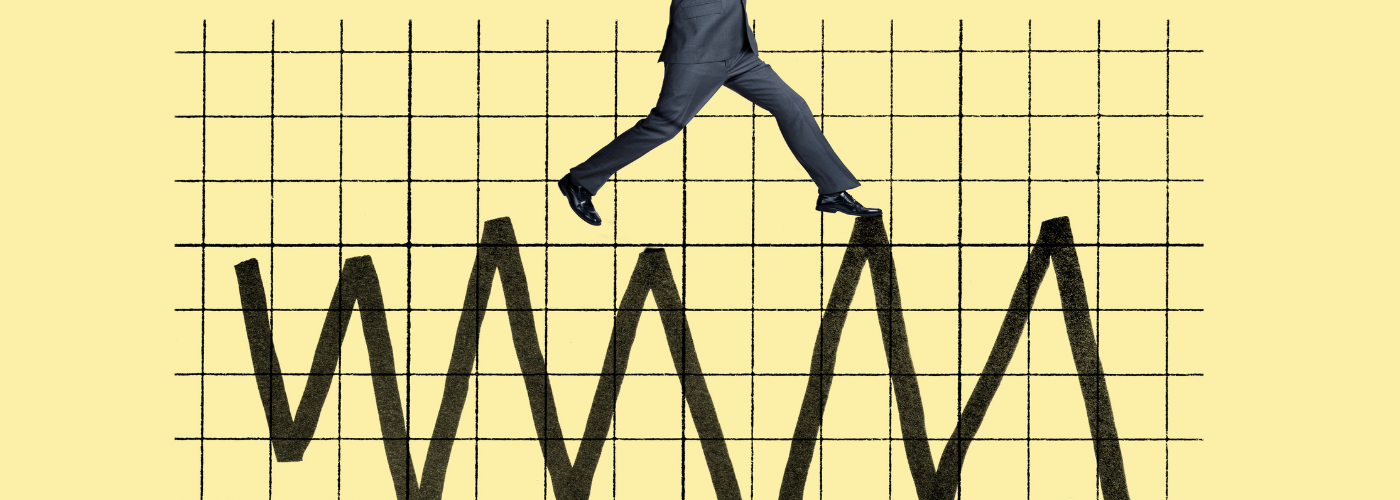(This article was originally published on 10 June 2022)
What a week. The biggest cash rate hike since Howard, cabbage at KFC and gloomy growth forecasts from the Mathias Cormann-headed OECD. As if it could not get any worse, I move on Saturday and write this surrounded by packing boxes. By next week, I should be happily ensconced in a Bondi apartment. Today, let’s focus on our battered banks. Send all comments to: lewis.jackson@morningstar.com.
Banks correct
Last week the future for banks looked bright. Rising interest rates would nourish emaciated margins. A red-hot economy would keep new borrowers coming through the door and credit growth strong. The $200 billion Australians had squirreled away in savings and offset accounts would ward off defaults or an economic slowdown.
So, there were many reasons to think bank investors would cheer the Reserve Bank’s widely-anticipated decision to raise the cash rate on Tuesday.
Instead, the S&P/ASX 200 Financial Services index plummeted 8.2% from Tuesday to the close on Friday. Mortgage-heavy Commonwealth Bank and Westpac hit correction territory, ending the week down 11% and 13%, respectively.
Governor Philip Lowe’s 0.5% rate hike surprised markets. Only three of the 22 economists polled by Bloomberg beforehand picked it. Forecasters rushed to price in the cash rate going further and faster. Suddenly, ‘front-loading’ became the word of the week. Commonwealth Bank tips a cash rate of 2.1% in December, up from its 1.3% forecast last week.
The hawkish surprise has clouded the outlook for banking in three ways.
Top of mind are bad debts. Investors are worried banks could be saddled with more delinquencies and doubtful debts as borrowers lulled by Lowe’s ill-fated commitment in late 2021 to keep rates pegged at 0.1% until 2024 struggle with repayments.
Credit growth could also slacken. Higher borrowing costs reduce how much banks are willing to lend and how willing people are to take on new debt. If house prices continue falling—CBA thinks they will slide 15% by the end of 2023—the lucrative torrent of mortgage lending will slow too.
Data released from the ABS last week showed owner-occupier lending fell 7.4% in April, albeit from record highs.
Sceptics are also poking holes in the margin expansion narrative. The popular argument is that as rates rise, banks lift variable rate loans faster than deposit rates. Lazy depositors leave money in low-interest transaction accounts, giving banks cheap cash to lend out at higher margins. However, Morningstar head of equity research Peter Warnes believes depositors could overcome some of their inertia in a more competitive, crowded banking market. Macquarie is now offering 1.5% on transaction accounts. Colleague Nathan Zaia argues intense competition is likely to limit margin expansion regardless of depositor loyalty.
Looming over everything is the spectre of an economic slowdown. If Lowe’s cash rate hikes stop rather than slow the economy, a recession would worsen bad debts and throttle credit growth. A nightmare scenario sees the Reserve Bank kill the economy but not inflation—stagflation. Banks have historically underperformed in periods of low growth and high inflation, according to UBS.
Growth is showing signs of decelerating around the world. Commonwealth Bank (ASX: CBA) revised down growth forecasts for Australia on Thursday, from 4.7% to 3.5% for the calendar year. The World Bank and OECD slashed global growth forecasts this week, blaming the usual suspect of war and interest rate hikes.
Economic slowdowns are bad news for banks, which are “leveraged bets” on the economy, say Bryce Anderson, a portfolio manager at Morningstar.
“One of the key drivers of whether banks are attractive or not is not whether a recession happens, or do they have enough capital provisions to sail through,” he says.
“Everyone is starting to price in [credit] velocity coming down, bad and doubtful debts coming up. Long term, it’s whether a bank can sail through these dips and avoid going to the market to raise capital.”
That said, the selloff has a whiff of short-term panic about it. Is Commonwealth Bank really 10 percent less valuable in a few days?
Most analysts I spoke to stressed caution not catastrophe. Loss provisioning remains above pre-covid levels. The majors have $15 billion stashed aside, according to UBS analysis. Credit growth will slow, but that was always going to happen. Sliding house prices make homeowners wince, especially those who have bought in recent months, but loan serviceability is supported by lots of savings and low unemployment.
A deep recession also remains an outlier. Downgrade or not, 3.5% economic growth this year is enviable, with a 50-year low in unemployment. Let’s not to talk ourselves into a recession.
UBS says a “substantial blow-up in credit provisions” is needed to derail bank earnings and an economic soft landing remains the base case. Macquarie believes depositors will stay put and even in a hotly- contested market for term deposits, banks are expanding margins. The banks is calling the selloff a “tactical buying opportunity”.
Here’s Zaia again on why puncturing an overly optimistic outlook is no issue for long term investors:
“We never assumed there would be a rosy picture forever anyway. The market is taking in that adjustment or change but is probably getting carried away by focusing on those downside risks.”
Nevertheless, shielded from the worst of this year’s global selloff by a commodity and mortgage boom, Australian investors are nervous the banking sector is now looking shakier. Overall, the local market is facing the same headwinds as those overseas: stubborn inflation, aggressive central banks and slowing growth.
Digging up rocks and pumping oil and gas and selling them to a resource-hungry world helps but does not fully insulate Australia from a global downturn.
More from Morningstar this week
Start by getting caught up on what happened this week courtesy of my colleague Nicola.
In a week dominated by interest rate chatter, Graham Hand sat down with the chief executive of Charter Hall Direct to chat how commercial real estate will navigate higher rates and the end of the pandemic.
For those sitting on cash weighing up how to reenter equity markets, Nicola reviewed dollar cost averaging. Looking for ideas? We’ve got dividend and semiconductor picks Morningstar analysts like. Also the best places to shop around for a better rate on your transaction account or term deposit.
 Morningstar
Morningstar






